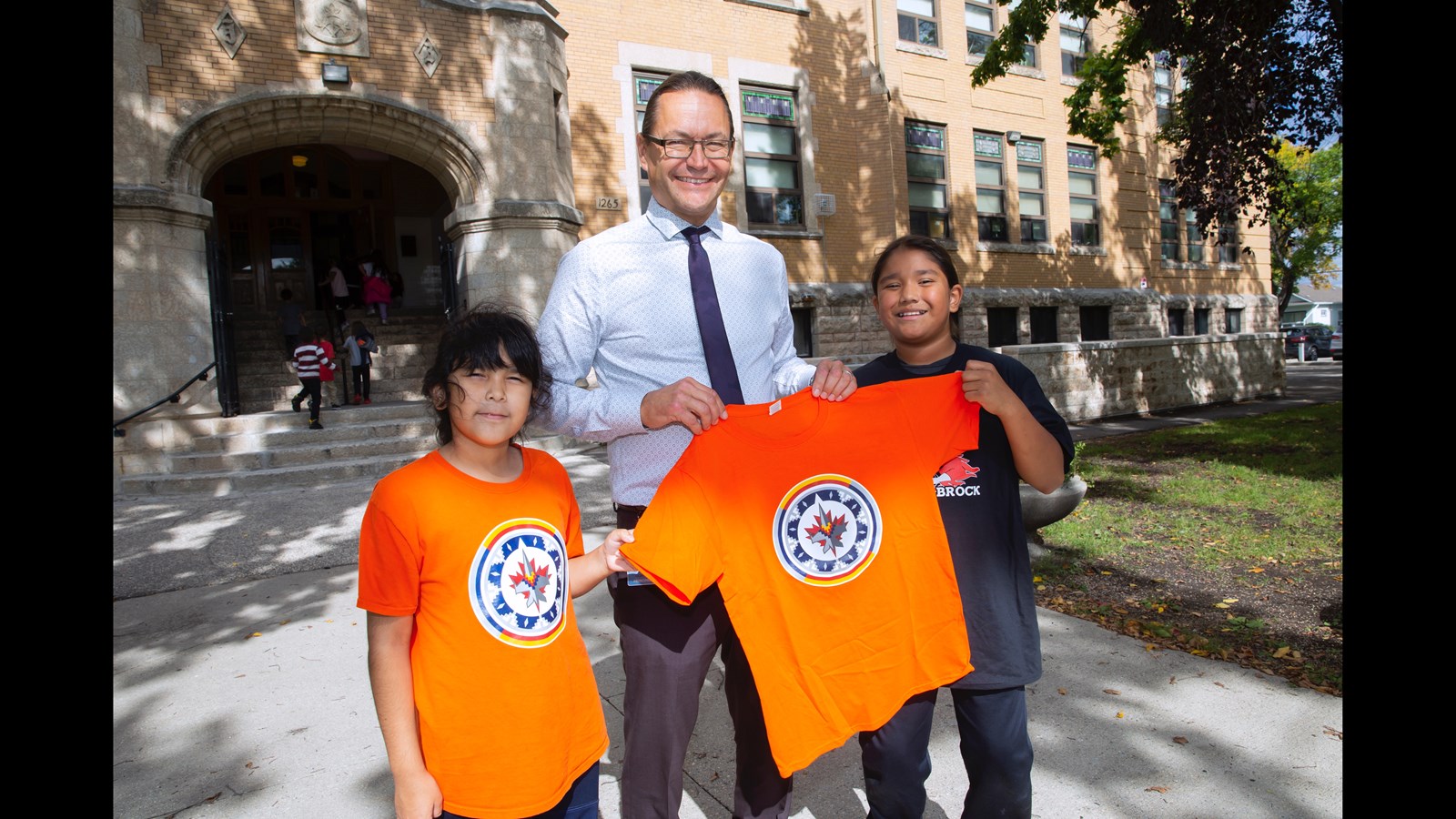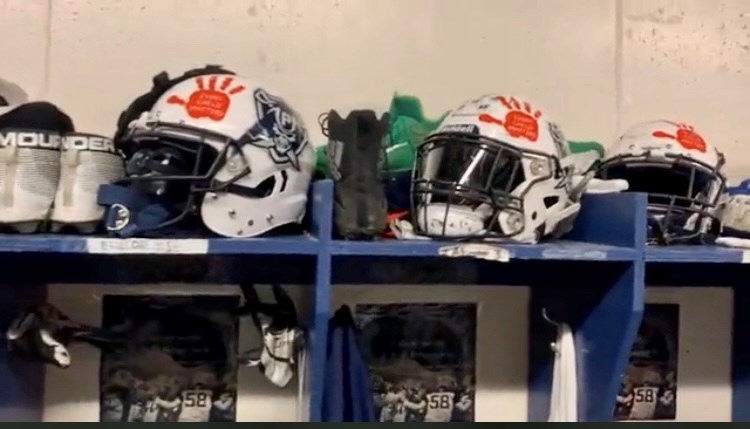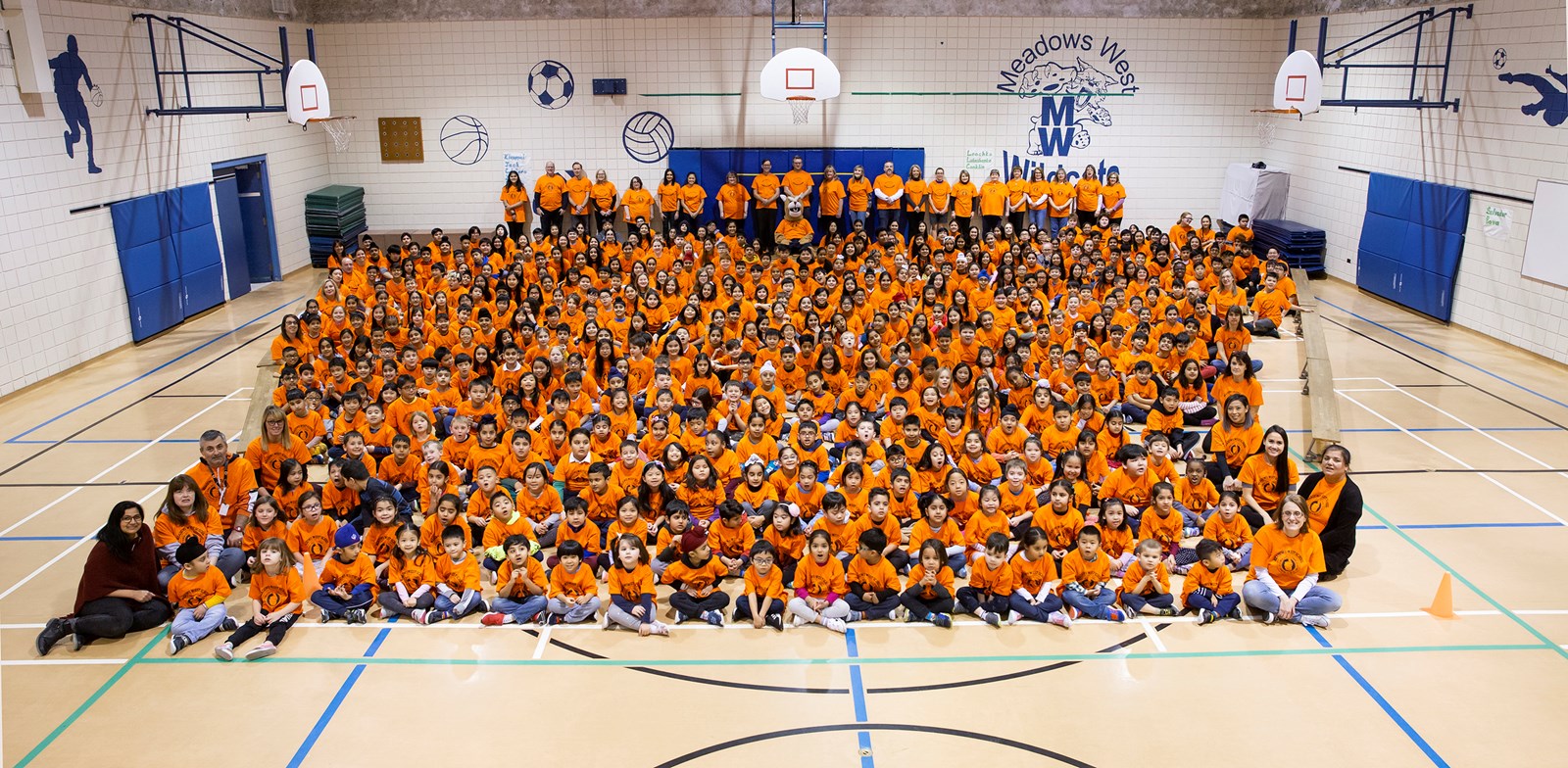WSD students, staff ready for National Day for Truth and Reconciliation
September 26, 2022
Remembering a painful past, but hopeful for the future, WSD students and staff are honouring the upcoming National Day for Truth and Reconciliation with many educational activities and commemorations.
The Canadian government declared Sept. 30 a federal statutory holiday to honour residential school survivors and those who never returned home from these boarding schools.
Operating in Canada for over 100 years (with the last school closing in the mid-1990s), Canada’s residential school system separated Indigenous children from their families for extended periods of time and supressed their Indigenous culture and languages. Students were often vulnerable to abuse and some did not survive their stays at the boarding schools.
The generational impacts of this dismantling of families, cultures and traditions have been enormous.
While Sept. 30 is currently not a statutory holiday in Manitoba, WSD schools will be closed for both students and staff.
During the week of Sept. 26-29, WSD schools will be marking the event with learning activities and ceremonies.
In addition, a multi-educator Facing History Planning Committee, Indigenous Education Team, Professional Network of Indigenous Educators, and Professional Support Services have prepared three-weeks of focused learning activities for students and staff at all grade levels. This includes Lunch and Learn sessions for staff, dedicated theme weeks for students, suggested activities and a planning guide for educators.
The planning committee considers Sept. 30 as a launching point into a continuum of learning on a journey towards reconciliation.
“They’re not only preparing for the National Day for Truth and Reconciliation, they’re also setting the stage for this learning to go on throughout the entire year,” said Rina Whitford, a WSD Program Lead in Indigenous Education.
“We can create empathy and understanding. This knowledge isn’t just for Indigenous students, it’s for all students to help understand each other and restore relationships…we learn from the mistakes of the past and we get a greater understanding of the ongoing issues today. That will create change for tomorrow.”
 Grant Park High School's Pirates football teams will be wearing orange "Every Child Matters" decals this week in honour of those who attended residential schools in Canada.
Grant Park High School's Pirates football teams will be wearing orange "Every Child Matters" decals this week in honour of those who attended residential schools in Canada.
Age-appropriate learning
As learning about the residential school system can involve reflecting on the traumas of the Indigenous students who attended the schools, it is important to have age-appropriate learning.
“Generally from Kindergarten to Grade 4, the focus is on teaching about love, belonging, relationship and diversity,” Ms. Whitford said. “Some of the young students are coming to school saying ‘this happened to my granny, my mom or dad’ and they know they were a part of the residential school system.
“We don’t want to traumatize the students. But we can have conversations and acknowledge that yes this happened, and it was sad, but we can learn from that. How do we want to feel in the classroom? So it’s about celebrating differences, building relationships and that idea that school is a safe place.”
The planning committee has come up with a wide-variety of resource materials to help teachers handle the topic in a respectful, sensitive and thoughtful manner.
“We always look at how to approach this at an age appropriate level, knowing that there are going to be some hard conversations that come up and how to best equip teachers to handle those conversations,” Ms. Whitford said.
Truth and Reconciliation in different curricular areas
Educators can weave lessons about Canada’s residential school system and the Truth and Reconciliation process into many different curricular areas.
At St. John’s High School, teacher Tala Gammon and her Grade 11 English class have been looking at different resources and reference materials on residential schools.
Students are examining resources to review for clarity, intended audiences and other criteria.
“We’re asking students to think about how they would package these resources to share with a general audience that maybe hasn’t had a lot of education around the truth of Canada’s history,” said Ms. Gammon, who was one of the educators involved with the Facing History Planning Committee.
“These students have been learning about residential schools since kindergarten, so in some ways, it is newer for teachers than it is for students.”
The class has been sharing their work on the Instagram account @wsdandtrc .
Students Hans Maningas and Tristan Galatierra were part of a student group project focused on sharing mental health strategies to the Instagram account. The group suggested activities such as smudging, going for a walk and self-meditation.
“We thought it would be good to share mental health tips, because there are people who are feeling some of the pain and suffering that happened in residential schools,” Hans said. “These health tips can help them cope and feel a bit better during these days of remembrance.”
 Smudging was one of the mental health tips shared on Instagram by St. John's High School students.
Smudging was one of the mental health tips shared on Instagram by St. John's High School students.
The Orange Shirt
At Isaac Brock School, students will be donning orange shirts and parading their school community on Sept. 29 in honour of the residential school survivors and victims.
Sept. 30 coincides with Orange Shirt Day, a grassroots Indigenous commemoration that takes its inspiration from the story of Phyllis Webstad of the Stswecem’c Xgat’tem First Nation in B.C.
In the mid-1970s, Phyllis went to attend a residential school in a shiny lace-up orange shirt that her grandmother had purchased for her. The shirt and the rest of Phyllis’s clothes were taken away from her upon her arrival at the school and replaced with dark clothing.
That orange shirt has since become a symbol the systematic stripping away of culture, freedom and self-esteem from the Indigenous children who attended residential schools.
 Meadows West School students and staff commemorating Orange Shirt Day in 2019.
Meadows West School students and staff commemorating Orange Shirt Day in 2019.
Isaac Brock, like many WSD schools, has participated in Orange Shirt Day for several years.
“The whole school—the English program, the Cree Bilingual Program, the Ojibwe Bilingual Program and our junior high will all be walking together to show solidarity and promote reconciliation,” said Principal Chris Goring.
The school will also host Elders and family members who will talk about their residential school experiences and its legacy.
Student Carter Parenteau said he has heard about the difficult residential school experiences of his grandfather and other Elders who have visited the school in previous years.
The Grade 6 student has been studying in Isaac Brock’s Ojibwe Bilingual Program since Grade 1; he said he felt proud to be learning the traditional language in school.
“It makes me feel really good. We almost lost the language before and now we are getting it back.”
Ann Bradburn, Isaac Brock’s Grade 3-6 Cree Bilingual Teacher, originally hails from Norway House. While she did not attend residential school, she recalls sad stories of attending day school in the community, where students still received religious education from nuns and priests.
“It is very important to get the kids aware about what happened and their history….and what happened to their parents, grandparents or ancestors in the past,” she said.
Mr. Goring said that ultimately the week was about finding a balance between reflecting on the past and moving toward healing.
“Though we focus on tomorrow and hope for the future—and that is what reconciliation is about—it always starts with the truth. The truth allows the healing to take place, it allows us to share not only as a school, but as a society and Canada as a whole, the idea of how do we reconcile those parts of our history that aren’t so great to know about or hear about. That can no longer be kept in the dark. When the truth is told, in an age appropriate way, whether it is through literature, sharing circles and other forms of learning, kids and staff are able to move forward and let the healing happen.”
